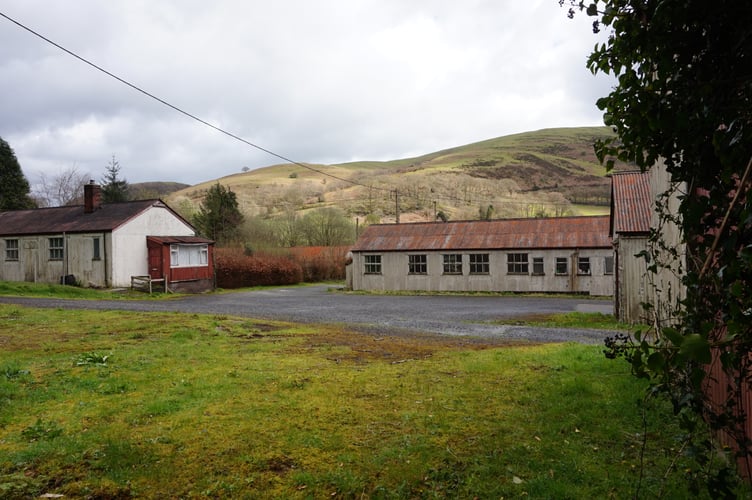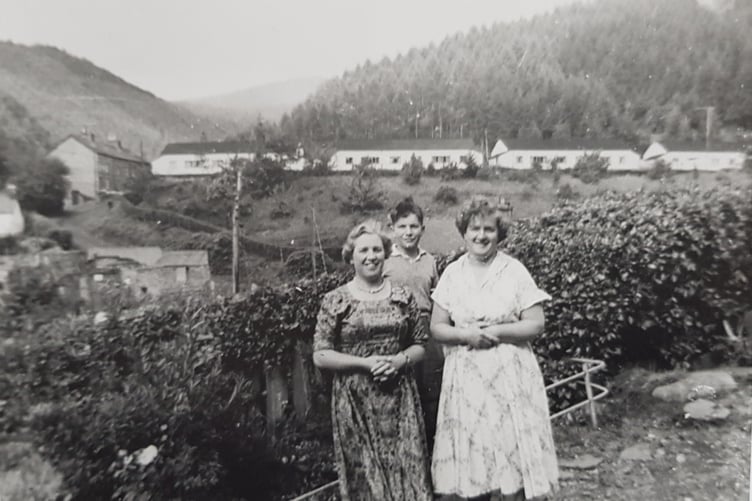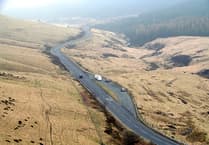On the edge of the sleepy Esgairgeiliog/Ceinws village sits a family of abandoned corrugated buildings.
Built almost 100 years ago, what is dubbed as ‘the camp’ by residents, has now been all but forgotten about by authorities.
It became a permanent home to families that had children and died in the vintage structures until the last man to be born there died in 2020.

Walking onto the land is like stepping into the past, but thanks to local historians Julia and Ray Gunn (who wrote a whole book on Ceinws history- Esgairgeiliog/Ceinws in Pictures and Words, Past and Present) they’ve documented what tales remain.
Despite the eery atmosphere evoking German Prisoner of War ghosts and borstal boys, ‘the camp’ is remembered most fondly as a community hub.
It first sprang out of an empty field in 1936 as the ‘Dovey Instructional Centre’ providing unemployed men with work laying new roads over Eryri mountains for the Forestry Commission (now Natural Resources England- NRW).
Lorries laden with corrugated iron, bricks and timber meant for the camp were known to fall off the old narrow Dulas Valley roads.

Groups often from Birkenhead arrived for three-month stints at the camp complete with a cookhouse, accommodation huts and a recreation hut.
Ceinws residents recalled Wednesday nights were silent film nights on a projector, whilst on Fridays you could put your name down for amateur boxing.
During WWII it became a borstal for Midlands boys, who residents remember once staged a great escape attempt by stealing a car.
At the end of the war came the German prisoners of war held at the camp to be repatriated. Residents remember them as friendly, joining in on football games using their coats for make-shift goalposts.
The camp then returned to providing homes and jobs for returning soldiers. It transformed into a self-contained village with a church, a children’s playground and a sports field.

The cookhouse-cum-village-hall hosted Christmas parties, polling stations, jumble sales, whist drives, WI meetings, a youth club, a billiards and snooker room and a library.
Festivals were hosted, with the first Mid-Wales ‘Ceinws Forest Queen’ being crowned in 1954- 15-year-old Blodwen Rowlands.
The huts transformed into comfortable bungalows for Forestry Commission employees and their families.
Kelvin Jenkins remembered his Taid and Nain’s bungalow at number four Heulfryn: “Looking at it now in its sad semi dereliction it is hard to imagine what snug little homes these once were.
“They cultivated an immaculate vegetable garden at the back. When my grandparents died they were laid out in the front parlour of number four, as was the custom of the day.”

In the ‘50s the Commission was “doing everything possible to encourage community life” which no doubt helped protect Ceinws from common rural depopulation.
As of 2003 two bungalows were still occupied, the remaining facilities closed by NRW.
Buildings were sporadically sublet as offices and workshops until leases ran out and tenants wondered whether to stay or go.
The camp is now empty, used as storage for NRW or some local groups, with one building functioning as workshop spaces for artists who stayed with NRW consent after their lease expired.
Though Ceinws residents have put numerous proposals together over the last 20 years for the NRW to consider making use of the camp as mixed-use accommodation, workshop and play spaces or for horticulture work, their ideas weren’t taken up by NRW and the land will now be put up for lease ‘as seen’ this summer.
The only agreement that could be reached by residents was for the only playground in Ceinws to remain on the camp, though whether the new tenants will agree to that is another question.


.jpeg?width=209&height=140&crop=209:145,smart&quality=75)
-Glennies-Sponsored-Toddler-walk-group.jpeg?width=209&height=140&crop=209:145,smart&quality=75)
Comments
This article has no comments yet. Be the first to leave a comment.